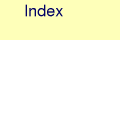

























MOLCAS manual: Next: 8.23 GUGACI Up: 8. Programs Previous: 8.21 guessorb
|
| File | Contents |
| CIGUGA | This file contains the coupling coefficients that are needed in subsequent CI calculations. For information about how these coefficients are structured you are referred to the source code[47]. The theoretical background for the coefficient can be found in Refs [46]–[47] and references therein. |
8.22.3 Input
This section describes the input to the
GUGA program in the MOLCAS program system, with the program name:
&GUGA
8.22.3.1 Keywords.
Formally, there are no compulsory keyword. Obviously, some
input must be given for a meaningful calculation.
| Keyword | Meaning |
| TITLe | The line following this keyword is treated as title line |
| SPIN | The spin degeneracy number, i.e. 2S+1. The value is read from the line following the keyword, in free format. The default value is 1, meaning a singlet wave function. |
| ELECtrons | The number of electrons to be correlated in the CI of CPF calculation. The value is read from the line following the keyword, in free format. Note that this number should include the nr of electrons in inactive orbitals. An alternative input specification is NACTEL. Default: Twice nr of inactive orbitals. |
| NACTel | The number of electrons in active orbitals in the reference configurations. The value is read from the line following the keyword, in free format. Note that this number includes only the of electrons in active orbitals. An alternative input specification is ELECTRONS. Default: Zero. |
| INACtive | The number of inactive orbitals, i.e. orbitals that have occupation numbers of 2 in all reference configurations. Specified for each of the symmetries. The values are read from the line following the keyword, in free format. |
| ACTIve | The number of active orbitals, i.e. orbitals that have varying
occupation numbers in the reference configurations. Specified for each
of the symmetries. The values are read from the line following
the keyword, in free format.
At least one of the Inactive or Active keywords must be present for a meaningful calculation. If one of them is left out, the default is 0 in all symmetries. |
| ONEOcc | Specify a number of active orbitals per symmetry that are required to have occupation number one in all configurations. These orbitals are the first active orbitals. The input is read from the line after the keyword, in free format. |
| NOCOrr | Specify the number of inactive orbitals per symmetry out of which at most one electron (total) is excited. These orbitals are the first inactive orbitals. The input is read from the line after the keyword, in free format. |
| REFErence | Specify selected reference configurations. The additional input that is required usually spans more than one line. The first line after the keyword contains the number of reference configurations, and the total number of active orbitals, and these two numbers are read by free format. Thereafter the input has one line per reference configuration, specifying the occupation number for each of the active orbitals, read by 80I1 format. Note that Reference and CIall are mutually exclusive. |
| CIALl | Use a Full CI within the subspace of the active orbitals as reference configurations. The symmetry of the wavefunction must be specified. The value is read from the line following the keyword, in free format. Note that CIall and Reference are mutually exclusive. One of these two alternatives must be chosen for a meaningful calculation. |
| FIRSt | Perform a first order calculation, i.e. only single excitations from the reference space. No additional input is required. |
| NONInteracting space | By default, those double excitations from inactive to virtual orbitals are excluded, where the inactive and virtual electrons would couple to a resulting triplet. With the NonInteracting Space option, such 'non-interacting' configurations are included as well. |
| Printlevel of the program. Default printlevel (0) produces very little output. Printlevel 5 gives some information that may be of interest. The value is read from the line following the keyword, in free format. |
8.22.3.2 Input example
&GUGA
Title
Water molecule. 2OH correlated.
Electrons = 4
Spin = 1
Active = 2 2 0 0
Interacting space
Reference
3 4
2020 ; 0220 ; 2002
Next: 8.23 GUGACI Up: 8. Programs Previous: 8.21 guessorb

